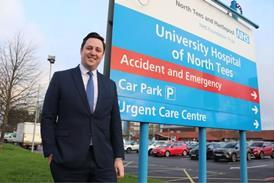Extra funding for the NHS has been secured despite Treasury scepticism that the health service can change. If there’s a deal for social care and local government, backed by a more coherent policy landscape, we can prove them wrong, says Rob Webster
The prime minister’s commitment to NHS funding over the next five years is a positive political gesture of faith in the NHS. As we saw in the NHS Plan in 2000, a combination of political leadership, policy coherence and long term financial investment can genuinely transform care.
At that time, long waiting times for treatment were the biggest problem faced by the NHS, closely followed by a workforce crisis and a crumbling estate. Two of those things feel very familiar to us today, with the availability of our workforce being our biggest rate limiting factor and backlog maintenance of £5.5bn.
Tackling multiple morbidity
Yet, the biggest issue patients and citizens face today is not waiting but getting support with multiple long term conditions. This multiple morbidity places unprecedented demand on services and must be addressed.
The excellent recent report from the Institute for Fiscal Studies and the Health Foundation showed the consequences of failing to do so. They concluded that spend on people with chronic diseases in hospitals will double over the next 15 years if things don’t change. Crucially, they concluded that investment must go into the NHS and a similar level of growth into social care if we are to have a sustainable NHS at all.
Beyond the public narrative of “the National Health Service” which suggests a single structure that operates as a single organisation lies the reality. The NHS is a system not an organisation and it sits within a health and care system that itself reaches deep into every community.
Local government has as big a role to play as any NHS trust, clinical commissioning group or national leader in a successful future
Making sense of the system is a challenge faced by carers and patients every day. The complexity is staggering and leads to a “burden of treatment” alongside a “burden of disease”. It’s time to invert our thinking and forget about people being a guest in our organisation and start thinking that we are a guest in people’s lives.
These are lives blighted by chronic diseases that are prevalent in specific communities. They can be improved and we can organise better, simpler and more cost effective care together. This starts in communities, built from partnerships between local people, politicians and good primary care.
We should be ambitious here too. Modern health and care systems meet the physical, mental and social needs of people. The NHS and care system is no different and the prime minister’s announcement is a start in giving us the tools to do the job.
Her welcome focus, for example, on mental health might mean I no longer have 16 year old children on adult units and that suicides are no longer the biggest killer of young men. It is a necessary step, a huge step, in the right direction but it is not yet sufficient to meet the needs of the people in the communities we serve.
That will require real and sustained financial support for social care. It will require a revolution in how we fund and think about prevention. And it will require genuine recognition that housing, education, employment, lifestyle and the environment are the biggest factors in your health and the biggest drivers of demand. Local government has as big a role to play as any NHS trust, clinical commissioning group or national leader in a successful future.
Additional resources
Over the coming weeks and months things should become clearer. We can then place additional resources alongside a new and more coherent policy framework for the health and care system.
Collaboration is critical to success, but collaboration is a noun, not a policy. The 2000s were defined by bold, often contentious, policies that made change happen. We need to see the development of better policies designed for the issues that face us today.
We need a long term workforce strategy that invests in our people today and secures a pipeline for the future
We are already seeing this emerge from the bottom up. Four of the six acute trusts in my Integrated Care System Partnership are on aligned incentive contracts that share risk in the system, for example. Housing and health are a priority for West Yorkshire and Harrogate building on the wonderful work in Wakefield that is transforming help for vulnerable people.
General practices are being transformed with learning from vanguards and integration pioneers. This is being led by a network of local leaders bound by shared commitment in the face of conflicting policy and financial landscapes. Imagine what we could do if incentives, regulation and policies were aligned to support us.
Ultimately, delivery will require the commitment, effort and energy of our biggest cost and our biggest asset – our staff. We need a long term workforce strategy that invests in our people today and secures a pipeline for the future.
This starts with truly valuing staff who work in health and care right now and improving their working lives. It extends beyond them to every carer and every volunteer. Their efforts are what makes the health and care system work, because beyond the policies and the politics, this is all about people.
The next few months in the run up to the 2018 Budget will be critical. A “something for something” deal is being made between the NHS and the government. We all have a role to play in ensuring our partners in local government and social care are included.
Extra funding for the NHS has been secured at a time of often reported Treasury scepticism, who doubt that investment in the NHS will secure transformation. With a deal for social care and local government, backed by a more coherent policy landscape, we may finally have the tools to prove them wrong.

































No comments yet